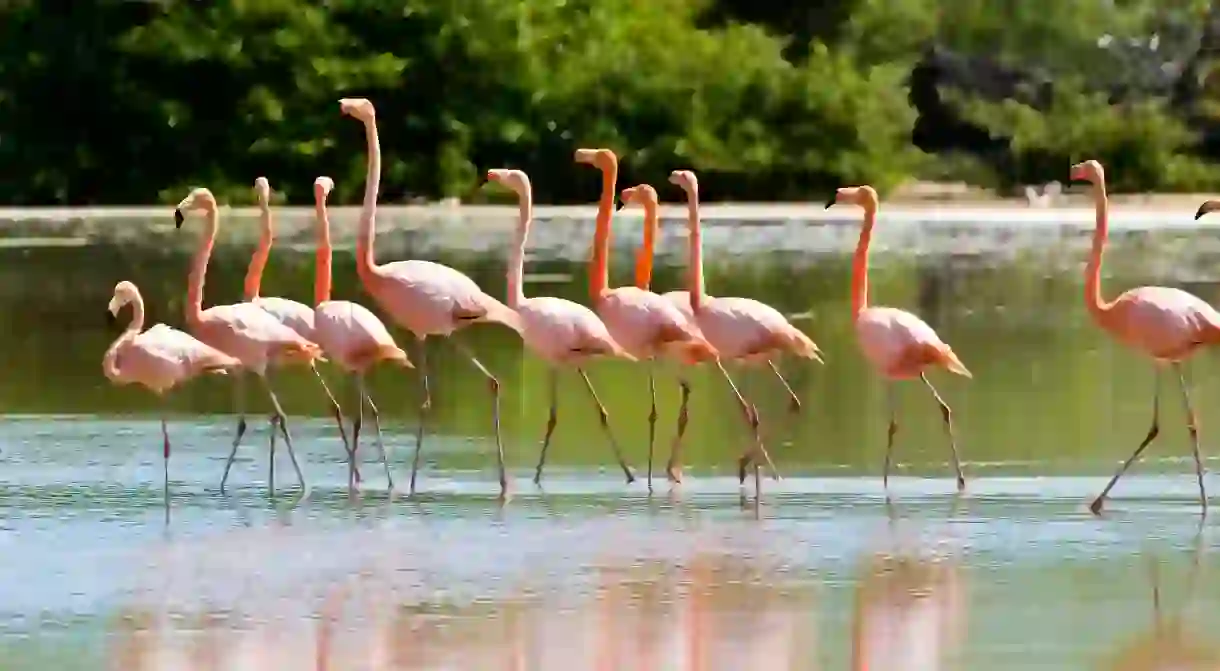Awesome Native Animals You Can Only Find in the Galapagos Islands

The Galápagos Islands are known for their unique array of wildlife and they’re home to many species not found in any other place in the world. The islands offer you the chance to see many fascinating species of mammals, birds and reptiles – here are the awesome native animals you can find only here.
Dreaming of a trip to the Galápagos Islands? Now you can travel with Culture Trip to these incredible islands and observe some of nature’s most baffling examples of evolution under the expert guidance of our Local Insider. Lasting five days, our carefully curated small-group trip ensures you make the most of every second you spend on the Galápagos Islands.
Galápagos Tortoises
The Galápagos tortoises are one of the longest-lived species in the world – they’ve been known to live to over 150 years old. They can be recognised by their incredibly large size and slow movements – and mate at any time of the year, where the eggs usually hatch between April and December.

Darwin’s Finches
These birds are named after Charles Darwin, who discovered them on his second voyage to the islands. There are 13 subspecies of finches recorded on the Galápagos Islands and Darwin found out that they were different from island to island – as they had adapted to each different environment.
Galápagos Fur Seals
The Galápagos fur seal is smaller than a sea lion, with thicker fur, a pointier nose and a broader head. The fur seal is also a lot less vocal than the sea lion. The Galápagos fur seals live in large colonies on rocky shores – their population is in decline after many of them were killed for their fur in the 1800s.
Marine Iguanas
Marine iguanas can be seen almost anywhere in the Galápagos Islands. They are good swimmers and if you go snorkeling or diving around the seashore, you might just find them swimming with you – they love to lie in the sun on the rocks to warm up after swimming in the cold water, too. Scientists believe that iguanas from South America drifted out to the sea millions of years ago, landed on the Galápagos Islands and evolved into marine iguanas.

Flightless Cormorants
Flightless cormorants, of course, cannot fly and this is the only cormorant with this characteristic. Their wings are only one-third of their body size, making it impossible for them to fly. However, they’re great swimmers and can dive deep into the water, where they hunt for octopus and eels. They live only on the Isabela and Fernandina islands – and their numbers are now increasing as a result of successful conservation work.
Large Painted Locusts
These colorful locusts are an important part of the food chain in the Galápagos Islands – and are eaten in particular by Galápagos hawks and lava lizards, which are also endemic to the Galápagos Islands. The locusts can be seen on all the islands except Española. They can jump a very long way and love staying in humid forests – so naturally, the best time to spot them is during the rainy season.
Galápagos Penguins
You can find the second-smallest penguin in the world on the Galápagos Islands – the smallest is the little penguin that lives on Phillip Island in Australia. The Galápagos penguins are the only penguins you can see north of the equator and they’re also the only species without a specific breeding season. The Galápagos penguins pant like dogs when they are hot – and they love soaking up the sun on rocky cliffs and jumping into the ocean when it gets too hot. They always keep an eye out for predators, but the biggest threats to their numbers are sadly climate change and oil pollution.

Galápagos Mockingbirds
Galápagos mockingbirds mainly hunt on foot, instead of flying. They can be found on most of the Galápagos Islands – except for San Cristobal, Española and Floreana, which have their own species of mockingbirds that are adapted to life on those islands. Charles Darwin studied these mockingbirds closely to find out how they had evolved to adapt to their environments.
Back from the brink: The Floreana Mockingbird | © Andy Duckworth / Vimeo
Lava Lizards
These lizards can be identified by their small size, pointy heads and long tails. Both females and males are quite territorial and protect their territory from intruders – but the males are more aggressive and larger than the females. Lava lizards will change colour if they feel threatened or if there are changes in temperature. If their tail is attacked, they can drop it and grow a new one. Lava Lizards live in large groups in dry areas – usually on top of lava – where they tend to adapt to the colour of the lava.
Galápagos Flamingos
Galápagos flamingos can be recognised by their bright and rich pink colour. They get this colour as a result of their diet of crustaceans, which include a pigment that causes the bright pink colour. The Galápagos flamingos usually stand on one leg, which is their resting position. They can be spotted on the islands Isabela, Rábida, Santiago and Floreana.
Galápagos Hawks
Galápagos hawks are seen on many of the Galápagos Islands, but their population is dwindling. They are colorblind but otherwise have incredibly good vision. They are very important to the food chain – and sit on top – where they have nothing to fear. They mainly survive on eating lava lizards, rodents and snakes.














